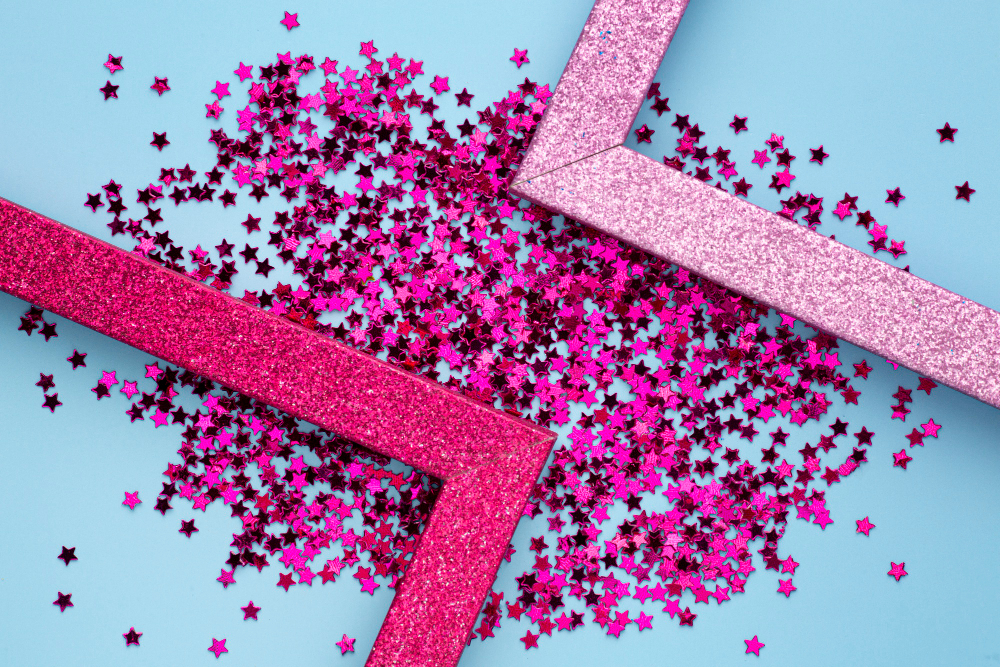Glitter – it’s the sparkling substance that adds magic and allure to everything from crafts and cosmetics to fashion and decor. But have you ever wondered what exactly glitter is made of? Join us as we uncover the shimmering secrets behind this beloved embellishment and explore the fascinating components that give glitter its dazzling appeal.
What is Glitter?
Glitter is a decorative material composed of small, reflective particles that shimmer and sparkle when exposed to light. These particles are typically made from various materials, each contributing to the unique appearance and texture of the glitter. From fine and powdery to chunky and textured, glitter comes in a wide range of sizes and shapes, making it a versatile and eye-catching embellishment for a variety of applications.
A Foundation for Sparkle
At the core of glitter lies its base material, which serves as the foundation for the sparkling particles. The most common base materials used in glitter production include plastics such as polyethylene terephthalate (PET) and polyvinyl chloride (PVC), as well as metals like aluminum and copper. These materials are lightweight, durable, and easy to manipulate, making them ideal for creating the fine, reflective particles that give glitter its signature sparkle.
Pigments and Dyes
To add color and visual interest to glitter, pigments and dyes are often incorporated into the base material during the manufacturing process. These colorants come in a wide range of hues and shades, allowing for endless possibilities when it comes to creating custom glitter colors. Whether it’s vibrant primary colors, iridescent pastels, or dazzling metallics, pigments and dyes enhance the visual impact of glitter and make it an essential tool for artists, designers, and crafters.
Enhancing the Sparkle
In addition to base materials and colorants, glitter may also be coated with special finishes to enhance its shine and reflectivity. These coatings can include metallic finishes like silver and gold, holographic effects that create a rainbow of colors, and iridescent coatings that shift and change depending on the angle of light. These finishing touches elevate the visual appeal of glitter and make it a favorite embellishment for everything from nail art to party decorations.
Exploring Different Types of Glitter
One of the things that makes glitter so versatile is its ability to come in a wide variety of textures and finishes. From fine and smooth to chunky and textured, glitter can be tailored to suit a range of creative projects and preferences. Some popular types of glitter include microfine glitter, which has a powdery texture and subtle sparkle, and chunky glitter, which features larger particles for a more dramatic effect.
Considering Sustainability
While glitter is undeniably beautiful, it’s important to consider its environmental impact. Traditional glitter, made from plastic materials like PET and PVC, can contribute to plastic pollution when it enters the environment. However, there are now eco-friendly alternatives available, such as biodegradable glitter made from plant-based materials like cellulose or mica. These sustainable options offer the same sparkle and shine as traditional glitter but break down naturally over time, reducing harm to the environment.
The Glittering World of Sparkle and Shine
In conclusion, glitter is a beloved embellishment that adds sparkle and shine to a wide range of creative projects and products. Made from a variety of materials, including plastics, metals, and pigments, glitter comes in a dazzling array of colors, textures, and finishes. While traditional glitter may have environmental implications, eco-friendly alternatives offer a sustainable option for those looking to add shimmer to their lives without harming the planet. So whether you’re crafting, decorating, or adding a touch of glam to your makeup routine, glitter invites you to sparkle and shine in style.
